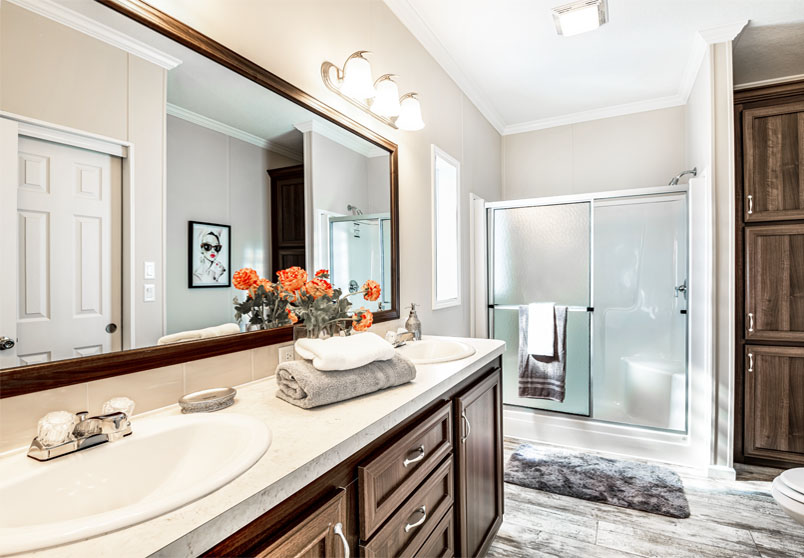What is one of the biggest battles Florida’s manufactured homeowners have to endure? Moisture! Uncontrolled moisture can not only make your home uncomfortable, but it can bring about numerous serious issues, including damage. Fortunately, there are things you can do to keep moisture levels under control in your manufactured or modular home. In this section of our Guide to Home Ownership, we explore how to manage moisture and humidity indoors.
Simple daily activities like cooking, washing and bathing are among the top things that add moisture to your home. Since these activities are necessary, the best way to protect your home is to understand how moisture works and what causes it, and by investing in a manufactured or modular home constructed from durable materials using the latest technology.
Understanding the Difference Between Moisture and Humidity in Your Manufactured Home
Although similar, and used interchangeably, moisture and humidity are not the same thing. Moisture refers to the presence of some liquid in the environment. On the other hand, humidity refers to the water vapor present in the air. Knowing this difference lets you take the proper steps to protect your manufactured home from water damage, or if it occurs, find and report the cause quickly. When you reduce humidity in your manufactured home, you control the moisture buildup and prevent water damage.
Proper Humidity Levels in a Manufactured Home
Humidity is not completely bad. In fact, in all types of buildings, proper humidity is necessary for good health and the comfort of the occupants, as well as for the proper maintenance of the structure and furnishings. If the humidity level is too low, you may experience a dry feeling of the skin, scratchy throat and high levels of electricity resulting in shocks and “static cling.
There are various ways to measure the humidity in your manufactured home. According to the National Asthma Council, in order to live in a safe space, indoor humidity levels should be between 30 to 50 percent. Anything lower than that will increase your chances of getting sick. Certain microorganisms thrive in humid environments, triggering conditions like allergies and asthma.
Negative Effects of Too Much Moisture in a Manufactured Home
Too much moisture will damage your manufactured home’s appearance and structural integrity. Moisture tends to accumulate on walls, windows, doors, millwork, ceilings, and floors. This build-up of moisture may cause stains, and if the condensation problem persists, it may even cause deterioration of some of the most visible areas of your home. Paint and wallpaper are among the first areas to get damaged by excessive moisture.
5 Tips for Keeping Moisture Under Control Indoors
The good news is the moisture can be regulated. Some things you can do to keep moisture controlled inside your home are:
- Use an electrically powered vent fan or a slightly opened window to prevent an accumulation of moisture condensation in kitchens and bathrooms.
- Do not turn the thermostat down to the point where condensation forms on windows and walls.
- Rely on air conditioners and humidifiers during Florida’s humid summer months.
- Watch out for plumbing leaks and report them immediately.
- Install a fan or blower to remove “cold spots” in a room where condensation is liable to occur.
When you invest in a Jacobsen Homes construction, you know your home is well built with high-quality materials. As a leader in the manufactured home building market in Florida, we account for moisture in our designs to make sure it doesn’t become an issue. Our manufactured and modular home models feature a ventilated room cavity, in addition to a whole-house ventilation system that maintains air flow through the home, eliminating moisture buildup.
If you want to learn more about how our homes are constructed, available features, or our manufactured home warranty, or you would like some help choosing the best floor plan for your lifestyle, contact us for more information.

